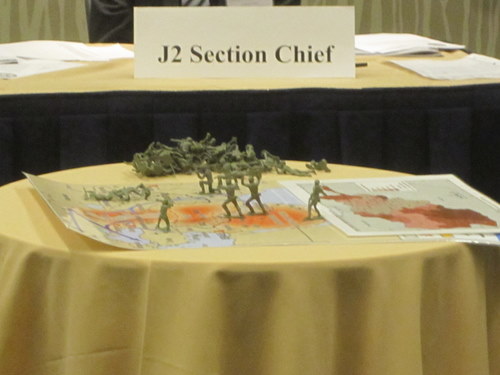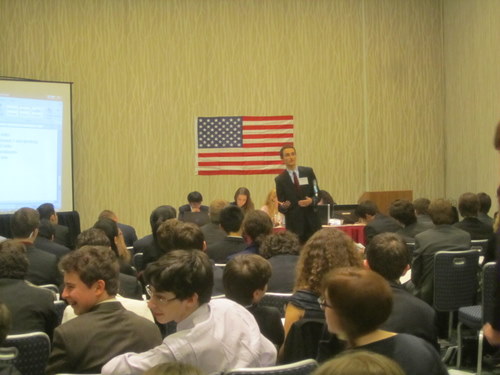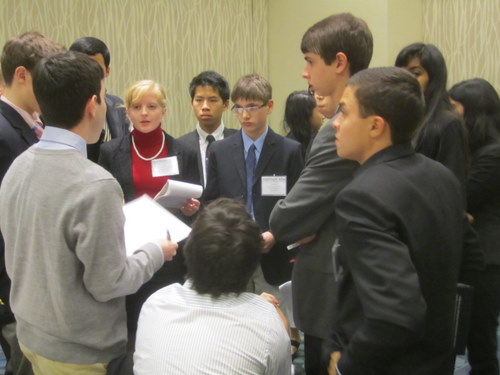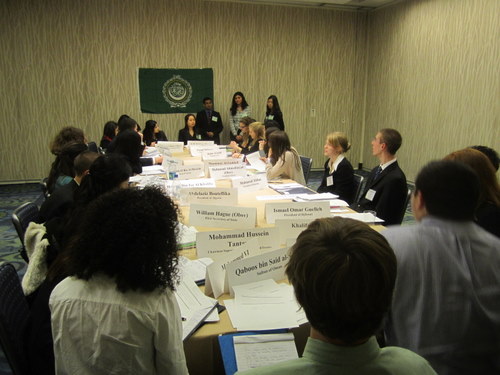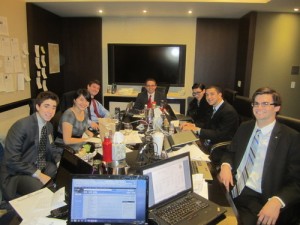
The crisis staff of the US National Security Apparatus
Many Model UN conferences feature crisis committees and NAIMUNwas no exception — the conference had 39 committees (which might be a Model UN record) and half of them were crisis-based — but I was really impressed with NAIMUN’s innovative approach to developing their crisis committees, and I think they’ve furthered the concept of what a Model UN crisis can be.
Firstly, NAIMUN’s crisis committees were very topical, addressing some of the most historic events that have taken place over the past decade. The Arab Spring was a theme in many committees — especially the Iran-Saudi Arabia joint crisis committees, the Egyptian Interim Government, and the Arab League — and all 4 committees got pulled into a midnight crisis on Syria. The North Korea cabinet discussed who would lead the country following the death of Kim Jong-il. And the 5 committees of the US National Security Apparatus were set in 2002, revisiting the decisions of post-9/11 foreign policy, including the wars in Iraq and Afghanistan — while at the same time, the Ad-Hoc Committee of the Secretary-General was transformed into the Pakistani Intelligence Service.
Secondly, NAIMUN used a fresh approach to having committees interact with one another, which they termed “crisis models.” As Hayes described in his post, the US National Security Apparatus committees followed a “concurrent crisis model” — unlike a joint crisis, they did not interact with each other directly, but they were presented with the same crisis scenarios, and the decisions of one committee impacted the others. Additionally, the 4 Arab Spring-related committees followed a “convergent crisis model” — each committee had different crisis scenarios to address, but they were all brought together during an emergency midnight session to discuss a new crisis about Syria.
What I like about NAIMUN’s approach is that it’s about more than having committees interact with one another — it’s about different types of committees working together. As Director-General Billyskye Handel pointed out to me, NAIMUN had international organizations like the Arab League or UN Security Council looking at a topic from a global, macro perspective, and then the cabinets of Iran, Saudi Arabia, and North Korea looking at the same topic from a national perspective. As a Model UN enthusiast, this is really cool — but more importantly, this approach furthers a key educational goal of Model UN — it teaches students about looking at a problem from different perspectives.
Check out these videos and pictures of NAIMUN’s crisis staff and committees below!
- The Arab League
- The crisis staff of the US National Security Apparatus



